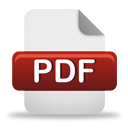

CLC number:
On-line Access: 2025-08-27
Received: 2024-08-19
Revision Accepted: 2024-12-03
Crosschecked: 2025-08-28
Cited: 0
Clicked: 1467
Yang TANG, Dengting LI, Honghao LIU, Chao ZHANG, Wujun WANG, Jie CAI, Huayong YANG, Yi ZHU. An energy-saving design method for additively manufactured integrated valve-controlled cylinders[J]. Journal of Zhejiang University Science A,in press.Frontiers of Information Technology & Electronic Engineering,in press.https://doi.org/10.1631/jzus.A2400396 @article{title="An energy-saving design method for additively manufactured integrated valve-controlled cylinders", %0 Journal Article TY - JOUR
一体化阀控缸节能设计与增材制造机构:1浙江大学,流体动力基础件与机电系统全国重点实验室,中国杭州,310058;2瑞典皇家理工学院能源技术系,瑞典斯德哥尔摩,10044;3中国铁建重工集团股份有限公司,中国长沙,410023;4浙江大学宁波国际科创中心,中国宁波,315100 目的:目前对增材制造成形的阀控缸设计方法研究都停留在根据既有经验设计元件结构的层面,均未从科学层面提出增材设计准则及流程。本文旨在提出一种基于增材制造的一体化阀控缸轻量节能设计方法,通过对某传统加工成形的阀控缸进行基于增材制造的再设计、再制造,并对成形的一体化阀控缸进行性能验证,以实现轻量节能。 创新点:1.提出了管缸贴壁一体化设计准则,提出了增材制造成形方式下贴壁设计的最小设计间距;2.提出了一种低压损流道路径规划方法,并基于模拟退火算法和粒子群算法实现低压损流道路径规划。 方法:1.通过仿真和理论分析,推导出管缸贴壁一体化设计过程中管壁应力变化情况,比较不同直径比下流道承受的应力(图4),进而提出增材制造成形方式下贴壁设计的最小设计间距(公式(9));2.通过仿真分析和插值计算,得出不同弯曲比、弯曲半径、流速下的流道压损模型(图6),基于此模型通过模拟退火算法和粒子群算法实现低压损流道路径规划(图11~13),并搭建试验台进行压损测试,验证所提方法的可行性和有效性(图17和18)。 结论:1.基于增材制造技术复现了原型液压原理,对阀控缸元件进行了重新设计,并去除了液压阀块以及连接接头;2.提出了管缸贴壁一体化设计准则,在避免应力集中的情况下缩短流道和缸筒距离,减少打印支撑;3.建立了不同工作流量、弯曲角度和弯曲比下拐弯流道的压损数据库,并基于此提出了以压损和拐弯数量为导向的阀控缸流道设计流程;4.相对于阀控缸原型,一体化阀控缸的重量减轻了31%,空间体积减小了55%,同时主功能流道的压力损失降低了30%以上;5.本研究提出了一套节能型阀控缸一体化设计流程,同时该设计方法适用于具有类似结构和类似连接方式的阀控缸、液压阀块等元件的增材制造设计。 关键词组: Darkslateblue:Affiliate; Royal Blue:Author; Turquoise:Article
Reference[1]BarasuolV, Villarreal-MagañaOA, SangiahD, et al., 2018. Highly-integrated hydraulic smart actuators and smart manifolds for high-bandwidth force control. Frontiers in Robotics and AI, 5:51.  [2]BhattiJ, PlummerAR, IravaniP, et al., 2015. A survey of dynamic robot legged locomotion. International Conference on Fluid Power and Mechatronics, p.770-775.  [3]ColettiF, VerstraeteT, BulleJ, et al., 2013. Optimization of a U-bend for minimal pressure loss in internal cooling channels—part II: experimental validation. Journal of Turbomachinery, 135(3):051016.  [4]CrawfordNM, CunninghamG, SpenceSWT, 2007. An experimental investigation into the pressure drop for turbulent flow in 90° elbow bends. Proceedings of the Institution of Mechanical Engineers, Part E: Journal of Process Mechanical Engineering, 221(2):77-88.  [5]HagenD, PadovaniD, ChouxM, 2019. A comparison study of a novel self-contained electro-hydraulic cylinder versus a conventional valve-controlled actuator—part 1: motion control. Actuators, 8(4):79.  [6]Hashan PeirisLD, PlummerA, RoesnerJ, et al., 2021. Prediction of flow path pressure drops in curved galleries for additively manufactured hydraulic manifolds. Symposium on Fluid Power and Motion Control, No. V001T01A021.  [7]HeW, DengQH, YangGY, et al., 2021. Effects of turning angle and turning internal radius on channel impingement cooling for a novel internal cooling structure. Journal of Turbomachinery, 143(9):091005.  [8]HuangH, ZhangJH, XuB, et al., 2021. Topology optimization design of a lightweight integrated manifold with low pressure loss in a hydraulic quadruped robot actuator. Mechanical Sciences, 12(1):249-257.  [9]HuangY, LeuMC, MazumderJ, et al., 2015. Additive manufacturing: current state, future potential, gaps and needs, and recommendations. Journal of Manufacturing Science and Engineering, 137(1):014001.  [10]LangelaarM, 2018. Combined optimization of part topology, support structure layout and build orientation for additive manufacturing. Structural and Multidisciplinary Optimization, 57(5):1985-2004.  [11]McClainST, HansonDR, CinnamonE, et al., 2021. Flow in a simulated turbine blade cooling channel with spatially varying roughness caused by additive manufacturing orientation. Journal of Turbomachinery, 143(7):071013.  [12]NiraulaA, ZhangSZ, MinavT, et al., 2018. Effect of zonal hydraulics on energy consumption and boom structure of a micro-excavator. Energies, 11(8):2088.  [13]PadovaniD, RundoM, AltareG, 2020. The working hydraulics of valve-controlled mobile machines: classification and review. Journal of Dynamic Systems, Measurement, and Control, 142(7):070801.  [14]PietropaoliM, AhlfeldR, MontomoliF, et al., 2017. Design for additive manufacturing: internal channel optimization. Journal of Engineering for Gas Turbines and Power, 139(10):102101.  [15]Pratheesh KumarS, ElangovanS, MohanrajR, et al., 2021. Review on the evolution and technology of state-of-the-art metal additive manufacturing processes. Materials Today: Proceedings, 46:7907-7920.  [16]QuanZY, QuanL, ZhangJM, 2014. Review of energy efficient direct pump controlled cylinder electro-hydraulic technology. Renewable and Sustainable Energy Reviews, 35:336-346.  [17]RezazadehS, AbateA, HattonRL, et al., 2018. Robot leg design: a constructive framework. IEEE Access, 6:54369-54387.  [18]Satish PrakashK, NancharaihT, Subba RaoVV, 2018. Additive manufacturing techniques in manufacturing–an overview. Materials Today: Proceedings, 5(2):3873-3882.  [19]SchmidtM, MerkleinM, BourellD, et al., 2017. Laser based additive manufacturing in industry and academia. CIRP Annals, 66(2):561-583.  [20]ShangYX, LiuXC, JiaoZX, et al., 2018. An integrated load sensing valve-controlled actuator based on power-by-wire for aircraft structural test. Aerospace Science and Technology, 77:117-128.  [21]WangWJ, TangF, ZhengC, et al., 2022. Prototyping a novel compact 3-DOF hydraulic robotic actuator via metallic additive manufacturing. Virtual and Physical Prototyping, 17(3):617-630.  [22]WeaverJS, HeigelJC, LaneBM, 2022. Laser spot size and scaling laws for laser beam additive manufacturing. Journal of Manufacturing Processes, 73:26-39.  [23]WuGH, YangJH, ShangJZ, et al., 2020. A rotary fluid power converter for improving energy efficiency of hydraulic system with variable load. Energy, 195:116957.  [24]WuXD, BaiWB, XieYE, et al., 2018. A hybrid algorithm of particle swarm optimization, metropolis criterion and RTS smoother for path planning of UAVs. Applied Soft Computing, 73:735-747.  [25]XieGL, DongYJ, ZhouJ, et al., 2020. Topology optimization design of hydraulic valve blocks for additive manufacturing. Proceedings of the Institution of Mechanical Engineers, Part C: Journal of Mechanical Engineering Science, 234(10):1899-1912.  [26]XuZQ, LiWL, LiuXY, et al., 2019. Dynamic characteristics of coupling model of valve-controlled cylinder parallel accumulator. Mechanics & Industry, 20(3):306.  [27]ZhangC, WangS, LiJ, et al., 2020. Additive manufacturing of products with functional fluid channels: a review. Additive Manufacturing, 36:101490.  [28]ZhangH, WangCY, LiCC, 2019. Optimization of flow channel in 3D printing hydraulic manifold block based on response surface method. The 8th IEEE International Conference on Fluid Power and Mechatronics, p.217-223.  [29]ZhangJH, ChaoQ, XuB, 2018. Analysis of the cylinder block tilting inertia moment and its effect on the performance of high-speed electro-hydrostatic actuator pumps of aircraft. Chinese Journal of Aeronautics, 31(1):169-177.  [30]ZhouL, ZhuY, LiuHH, et al., 2021. A comprehensive model to predict friction factors of fluid channels fabricated using laser powder bed fusion additive manufacturing. Additive Manufacturing, 47:102212.  Journal of Zhejiang University-SCIENCE, 38 Zheda Road, Hangzhou
310027, China
Tel: +86-571-87952783; E-mail: cjzhang@zju.edu.cn Copyright © 2000 - 2025 Journal of Zhejiang University-SCIENCE | ||||||||||||||


 ORCID:
ORCID:
Open peer comments: Debate/Discuss/Question/Opinion
<1>